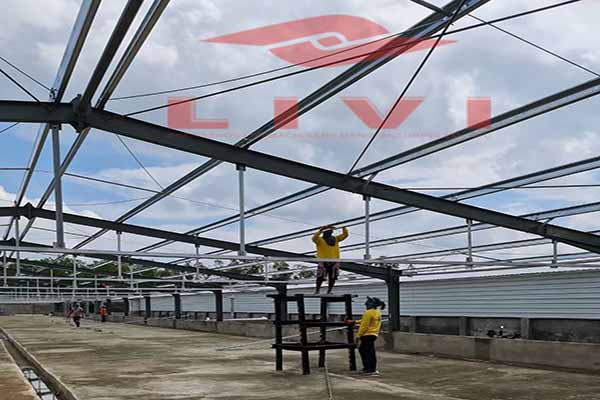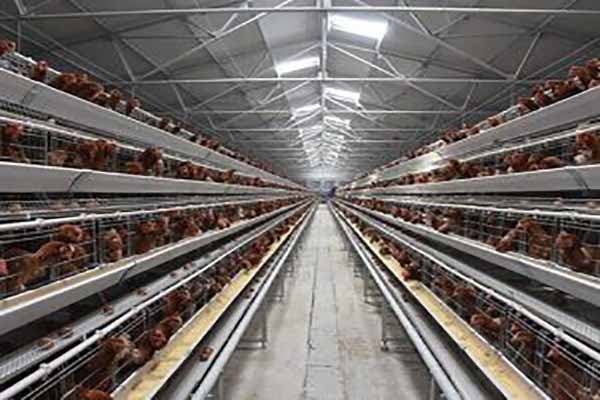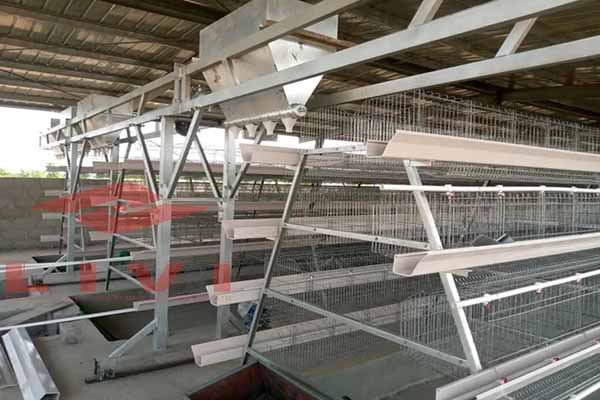Poultry Cage Systems for 20,000 Birds: A Comprehensive Guide
Time : 2025-06-25
As the demand for poultry products continues to rise globally, efficient and scalable farming systems are crucial for modern poultry farmers. One such system is the poultry cage system, designed to house a large number of birds, such as in the case of 20,000 birds. This article provides an in-depth look into poultry cage systems specifically tailored for housing 20,000 birds, focusing on design, maintenance, and optimization for maximum productivity and biosecurity.

Introduction to Poultry Cage Systems
Poultry cage systems are a form of intensive farming where birds are kept in confined spaces. These systems are widely used in commercial poultry farming due to their efficiency and ability to house a large number of birds. The design of a poultry cage system for 20,000 birds requires careful planning and consideration of several factors to ensure the health, welfare, and productivity of the birds.
Design Considerations for 20,000 Bird Poultry Cage Systems
1. Space Allocation
Proper space allocation is critical for the well-being of the birds. For 20,000 birds, the space required per bird can vary depending on the breed and size of the birds. As a general guideline, each bird should have at least 0.4 square meters of space. This ensures that the birds have enough room to move around, reducing stress and improving overall health.
2. Ventilation and Temperature Control
Efficient ventilation is essential to maintain a healthy environment within the poultry cage system. Adequate air exchange rate and temperature control are crucial for preventing respiratory diseases and ensuring the birds’ comfort. A system with automated ventilation and temperature control can optimize these conditions, providing a stable environment for the birds.
3. Feed and Water Supply
Access to fresh feed and water is vital for the health and productivity of the birds. The design should include automated feeders and waterers that can accommodate the number of birds without causing overcrowding. These systems should be easy to clean and maintain to prevent the spread of diseases.
4. Manure Management
Manure management is a critical aspect of poultry farming. A system designed for 20,000 birds should include an efficient manure removal system to minimize the risk of disease transmission and odor control. Options such as slatted floors, scrape systems, or solid manure handling should be considered based on the specific requirements and constraints of the farm.
Maintenance and Optimization
1. Regular Cleaning and Disinfection
Regular cleaning and disinfection of the poultry cage system are essential to prevent disease outbreaks. The frequency of cleaning should be determined based on the number of birds, the age of the birds, and the presence of any signs of disease. Disinfection protocols should be strictly followed to ensure the system remains pathogen-free.
2. Monitoring and Record Keeping
Continuous monitoring of the birds’ health, growth, and productivity is crucial for maintaining an efficient poultry cage system. Implementing a monitoring system that tracks key parameters such as weight, feed intake, and water consumption can help identify potential issues early and allow for timely interventions.

3. Biosecurity Measures
Biosecurity is a vital component of any poultry farming operation. A well-designed poultry cage system should incorporate biosecurity measures to minimize the risk of disease introduction and spread. This includes controlled access to the farm, the use of protective clothing, and regular health checks of the birds and personnel.
Conclusion
Poultry cage systems for 20,000 birds require careful planning and consideration of various factors to ensure the birds’ health, welfare, and productivity. By focusing on space allocation, ventilation, feed and water supply, manure management, and implementing effective maintenance and b iosecurity measures, poultry farmers can create an optimal environment for their birds. Investing in a high-quality poultry cage system tailored for 20,000 birds can lead to significant improvements in farm efficiency and profitability.
iosecurity measures, poultry farmers can create an optimal environment for their birds. Investing in a high-quality poultry cage system tailored for 20,000 birds can lead to significant improvements in farm efficiency and profitability.











